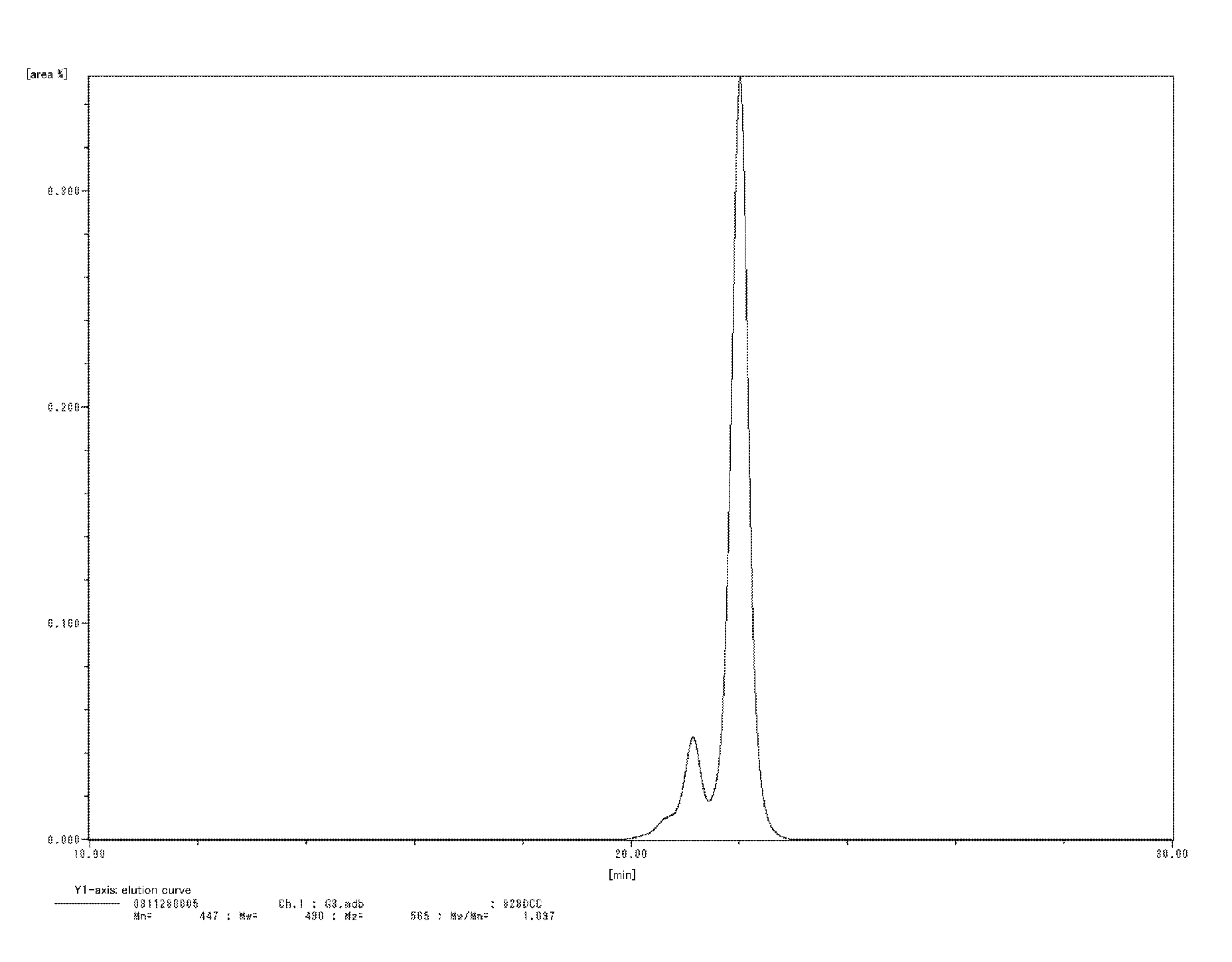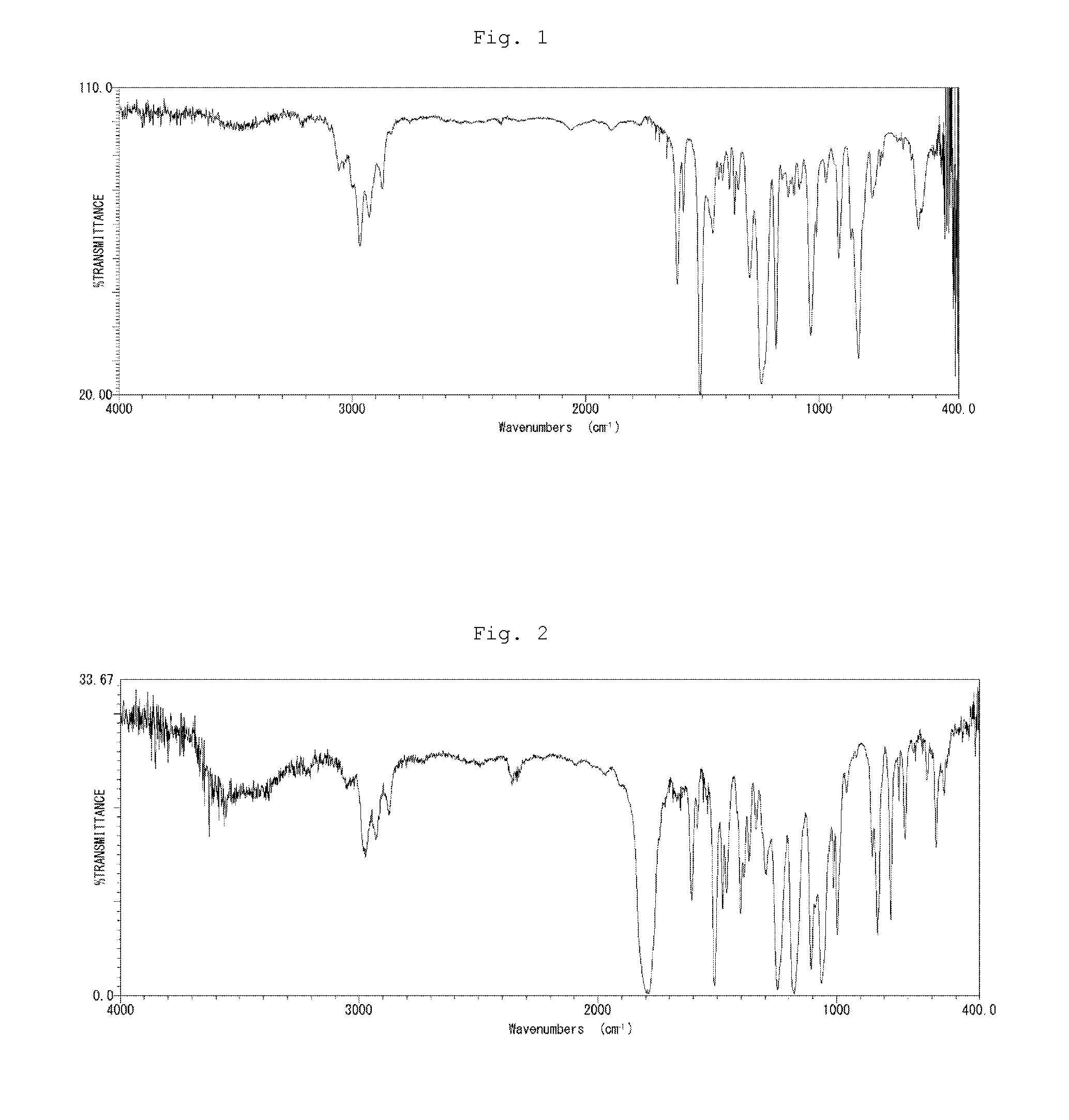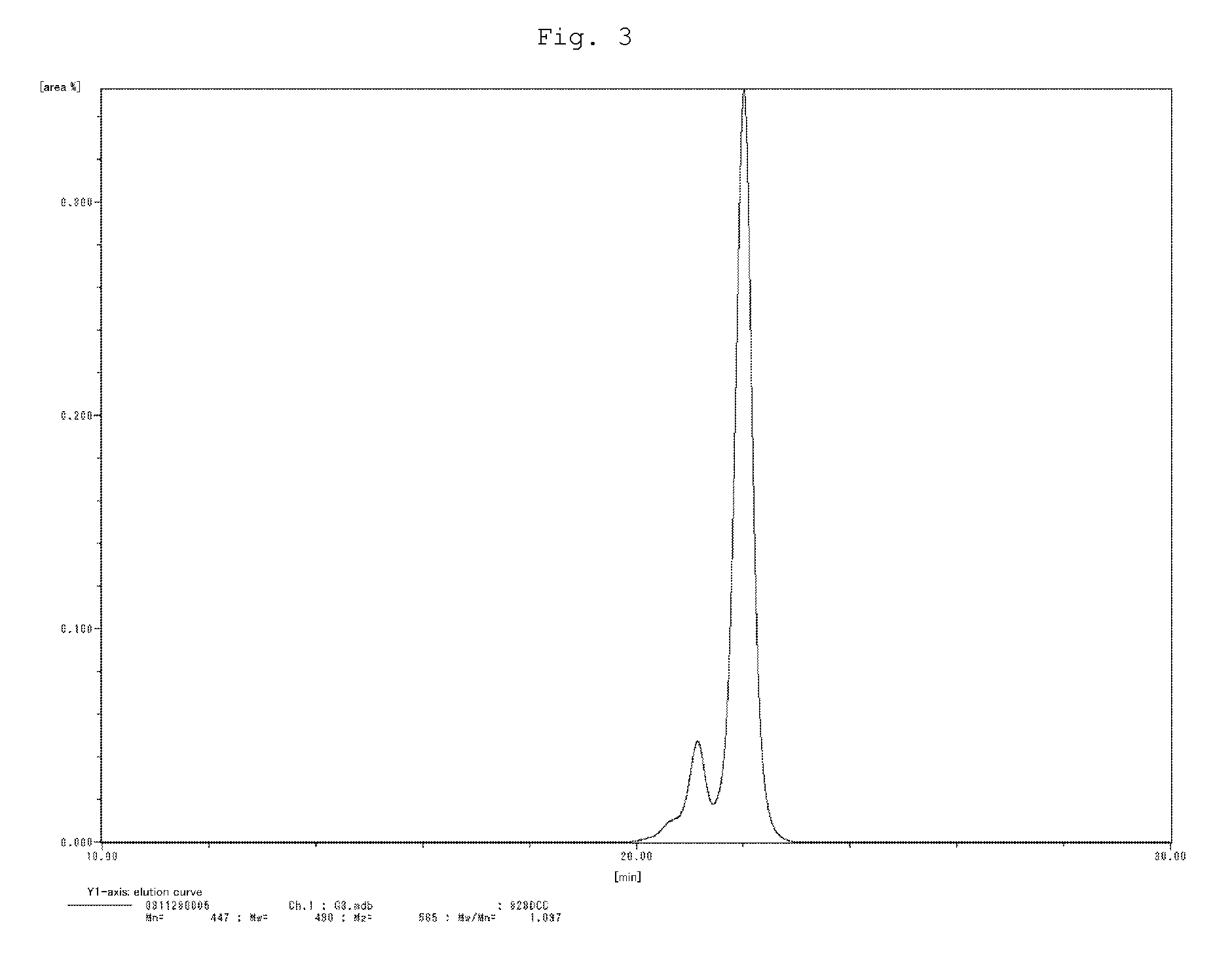Polysiloxane-modified polyhydroxy polyurethane resin, method for producing same, heat-sensitive recording material using the resin, imitation leather, thermoplastic polyolefin resin skin material, material for weather strip, and weather strip
a polyhydroxy polyurethane and polyhydroxy polyurethane technology, applied in thermoplastic polyolefin resin skin material, thermoplastic polyolefin resin, weaving, etc., can solve the problems of inability to provide heat resistance, inability to advance the development of applications, and inferior characteristics of conventional polyhydroxy polyurethane resins to fossil-based plastics. achieve excellent heat resistance, lubricity and non-tackiness, and reduce carbon dioxid
- Summary
- Abstract
- Description
- Claims
- Application Information
AI Technical Summary
Benefits of technology
Problems solved by technology
Method used
Image
Examples
production example 1
Production of 5-Membered Cyclic Carbonate Compound
[0138]To a reaction vessel equipped with a stirrer, thermometer, gas inlet tube and reflux condenser, a divalent epoxy compound represented the below-described formula (A) (100 parts), N-methylpyrrolidone (100 parts) and sodium iodide (1.5 parts) were added, followed by stirring into a homogeneous solution. Subsequently, the solution was stirred under heating at 80° C. for 30 hours while bubbling carbon dioxide gas at a rate of 0.5 L / min. The divalent epoxy compound used as described above was “EPICOAT 828” (product of Japan Epoxy Resin Co., Ltd.; epoxy equivalent: 187 g / mol), and its infrared spectrum is shown in FIG. 1.
[0139]
[0140]After completion of the reaction, the resultant reaction mixture was gradually added into n-hexane (300 parts) while stirring the latter at a high speed of 300 rpm. The resulting powdery reaction product was collected by a filter, wand then washed with methanol to eliminate N-methylpyrrolidone and sodium ...
production example 2
Production of 5-Membered Cyclic Carbonate Compound
[0142]In this production example, a divalent epoxy compound B represented by the below-described formula (B) (“YDF-170”, product of Tohto Kasei Co., Ltd.; epoxy equivalent: 172 g / mol) was used in place of the divalent epoxy compound (A) used above in Production Example 1. By conducting a reaction as in Production Example 1 except for the above-described change, a 5-membered cyclic carbonate compound (1-B) (121 parts, yield: 96%) was obtained as a white powder. The thus-obtained reaction product (1-B) was identified by infrared absorption spectroscopy, GPC and NMR as in Production Example 1. In the thus-obtained 5-membered cyclic carbonate compound (1-B), carbon dioxide was fixed as much as 20.3%.
[0143]
production example 3
Production of 5-Membered Cyclic Carbonate Compound
[0144]In this production example, a divalent epoxy compound C represented by the below-described formula (C) (“EX-212”, product of Nagase ChemteX Corporation; epoxy equivalent: 151 g / mol) was used in place of the divalent epoxy compound (A) used above in Production Example 1. By conducting a reaction as in Production Example 1 except for the above-described change, a 5-membered cyclic carbonate compound (1-C) (111 parts, yield: 86%) was obtained as a colorless clear liquid. The thus-obtained reaction product was identified by infrared absorption spectroscopy, GPC and NMR as in Production Example 1. In the thus-obtained 5-membered cyclic carbonate compound (1-C), carbon dioxide was fixed as much as 22.5%.
[0145]
PUM
| Property | Measurement | Unit |
|---|---|---|
| mass % | aaaaa | aaaaa |
| thickness | aaaaa | aaaaa |
| thickness | aaaaa | aaaaa |
Abstract
Description
Claims
Application Information
 Login to View More
Login to View More - R&D
- Intellectual Property
- Life Sciences
- Materials
- Tech Scout
- Unparalleled Data Quality
- Higher Quality Content
- 60% Fewer Hallucinations
Browse by: Latest US Patents, China's latest patents, Technical Efficacy Thesaurus, Application Domain, Technology Topic, Popular Technical Reports.
© 2025 PatSnap. All rights reserved.Legal|Privacy policy|Modern Slavery Act Transparency Statement|Sitemap|About US| Contact US: help@patsnap.com



